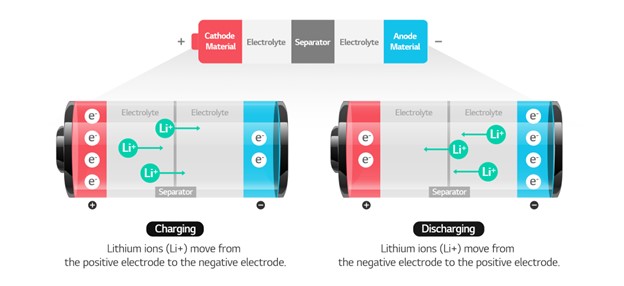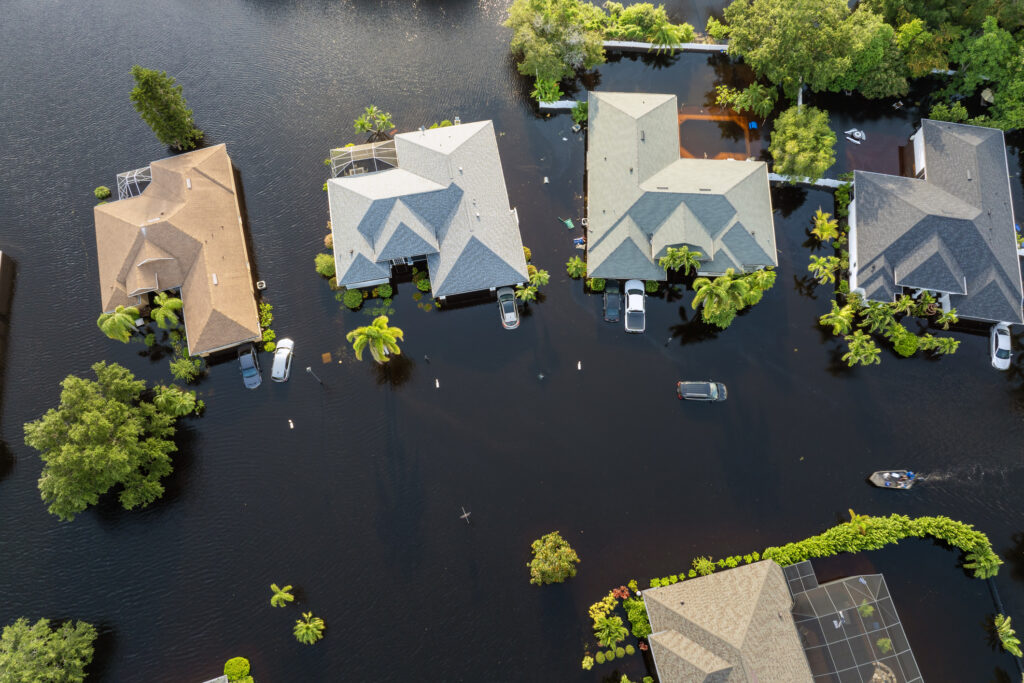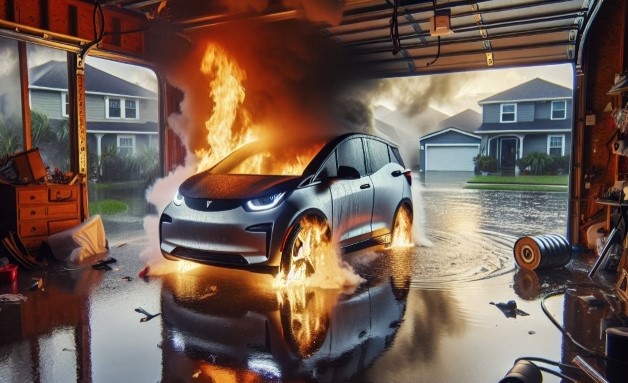State officials and emergency services face a new challenge this hurricane season with the significant risks of electric vehicles (EVs) igniting in the wake of catastrophic flooding. Most notably, Florida has approximately 280,000 electric vehicles registered, ranking the second most EVs registered nationwide. Water exposure, particularly saltwater exposure, can lead to fires days or weeks after an EV has been submerged.
Following Hurricane Ian in September 2022, the Associated Press reported that as many as 36 of the 5,000 flooded electric vehicles caught fire. Although only about 1.2% of EVs submerged ignited, these fires are extremely dangerous and may result in additional severe property damages. With the recent Hurricane Helene bringing record flooding to several regions in the Southeast, these figures are expected to rise this hurricane season.
The Threat of Saltwater Exposure to Electric Vehicles
EVs are powered by lithium-ion batteries. These batteries are also found in many devices we use today, such as electric bikes, and can undergo a thermal runaway process, a reaction that generates extreme heat and pressure. When the battery is in contact with saltwater, electrical pathways that bridge the positive and negative terminals of the battery are created, causing the battery to short-circuit and generate heat. The intense heat can ignite flammable materials near the battery, leading to a fire. Thermal runways are self-perpetuating, and the fire can become catastrophic. Vehicles can also catch fire long after exposure to salt water due to the salt's conductive materials.

Safety Measures
Flooding is becoming an increasingly higher risk in most areas of the country as weather patterns are becoming increasingly severe. Last week, in the wake of Hurricane Helene, western North Carolina received over 30 inches of rain. Even if you are not on the direct path of an upcoming storm, it is essential to understand how to protect your electric vehicle from saltwater exposure.

Planning Ahead
If a storm is approaching, relocate your EV to higher ground away from flood zones. Local communities are increasing offerings of designated safe parking areas for local residents during the storm. If you do not have time to move your vehicle to higher ground, vehicles should be parked at least 50 feet from your home to prevent property fires originating from your EV.
Post-Storm Actions
Do not use your EV if there are still many waterlogged areas in your community with standing water. If flooding submerges your vehicle, have a qualified technician inspect the vehicle before use.
CED Technologies' team of expert engineers, specializing in mechanical, civil, electrical, automotive, and chemical disciplines, possess the education, training, and experience necessary to analyze incidents involving electric vehicles and flooding. Our engineers are skilled at thoroughly documenting and preserving accident sites, collecting and retaining critical evidence, and conducting scientific investigations to explain the incident scenario. We provide clear, fact-based assessments to help determine responsibility for the event. Contact CED Technologies today for comprehensive engineering support in your electric vehicle cases.






